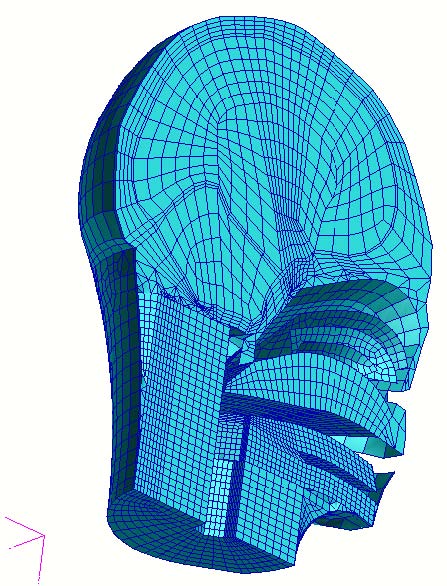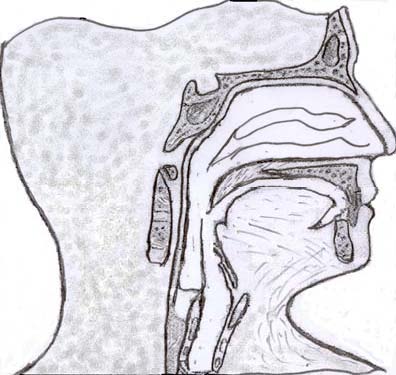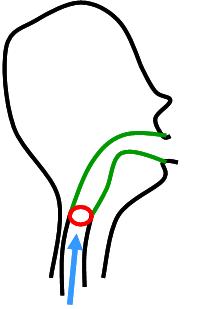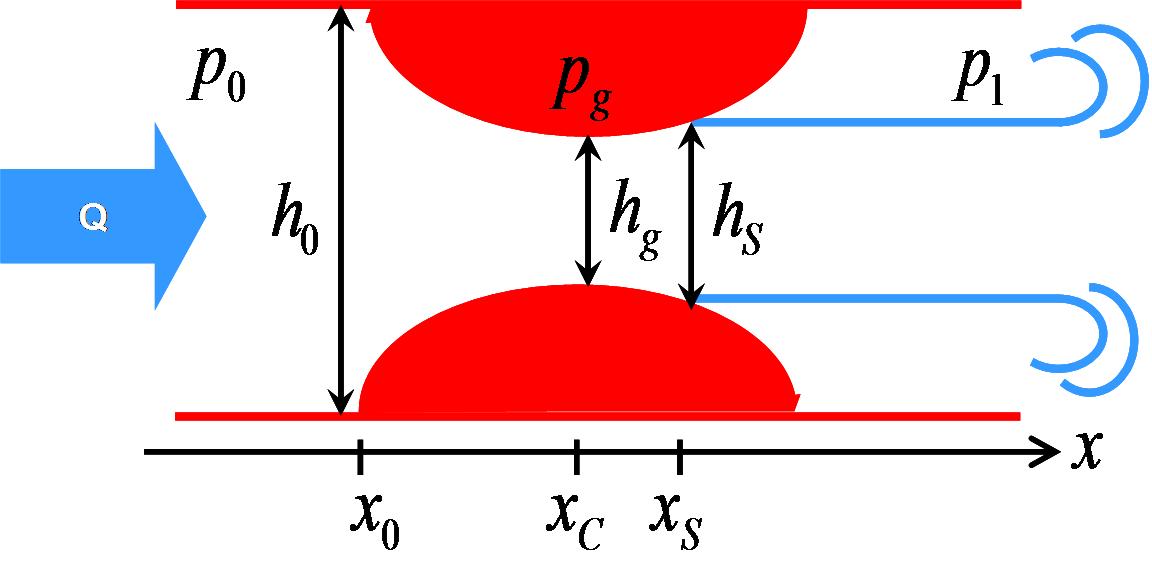


Snoring is defined as the sounds made by vibrations in the soft palate and their adjacent tissues (such as the posterior faucial pillars) during sleep. Researchers have shown that it is the most important symptom connected with the obstructive sleep apnoea (OSA) syndrome, as well as the cause of much disruption to bed partners and to the snorer. Heavy snoring can result in sleep-related upper airway narrowing, which leads to respiratory flow limitation and increased respiratory effort. Strong inspiratory suction may, secondarily, cause a total upper airway collapse.
This study aims to investigate the snoring mechanism by developing a 3-D finite element model of the human head and neck which includes the whole upper airway. The model includes the upper part of the head, neck, soft palate, hard palate, tongue, nasal cavity and the surrounding walls of the pharynx. A novel application of the structural intensity (SI) methodology (Liu et al., 2004; 2005) is adopted to identify snoring characteristics by using the vibro-acoustic noise control concept.
This work is in collaboration with Dr. Z. S. Liu , A*star Institute of High Performance Computing, Singapore


Voiced Speech sounds are produced due to the interaction of the vocal folds tissues and the respiratory airflow passing through the glottis which under certain conditions may lead to vocal folds self-sustained oscillatory behaviour of the tissue in terms of the relevant physical quantities. Simplified low-order models of voiced sound of of vocal folds pathologies which affects the mechanical properties of the tissue, the glottal geometry and the glottal airflow are of great interests because they allow much easier interpretation of the inherent model parameters in terms of meaningful physical and physiological quantities. However, pathological applications require firstly a high model accuracy, secondly a model able to mimic pathological abnormalities and thirdly a reliable inversion of classical models so that the driving input parameters can be found as functions of the standard output variables. In this study, we aim to address these issues by numerical simulation, simplified physical modelling and experimental 'in-vitro' validations.
This work is in collaboration with Dr. Annemie VAN HIRTUM GIPSA-Lab, Grenoble, France.
Move up to Dr. X. Y. Luo